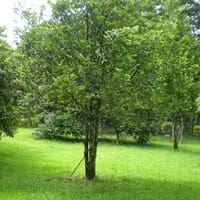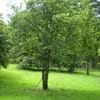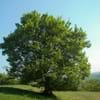Life Span
Perennial
Annual and Perennial
Type
Tree
Tender Perennial
Origin
Central Asia, Eastern Europe, Europe, Nepal, Southern Asia, Southern Europe
South Africa
Types
Not Available
Osteospermum acanthospermum, Osteospermum amplectens, Osteospermum burttianum
Habitat
Cold Regions, Hills, Hillside
Coastal Regions, Sandy areas, Terrestrial
USDA Hardiness Zone
9-11
10-11
AHS Heat Zone
7-1
Not Available
Sunset Zone
1a, 1b, 2a, 2b, 3a, 3b, 4, 5, 6, 7, 8, 9, 14, 15, 16, 17, 18, 19, 20, 21
8, 9, 12, 13, 14, 15, 16, 17, 18, 19, 20, 21, 22, 23, 24
Habit
Oval or Rounded
Clump-Forming
Flower Color
Not Available
White, Purple, Blue Violet
Flower Color Modifier
Bicolor
Bicolor
Fruit Color
Green, Brown
Not Available
Leaf Color in Spring
Green, Copper
Green
Leaf Color in Summer
Dark Green
Green
Leaf Color in Fall
Green
Green, Blue Green
Leaf Color in Winter
Green
Light Green
Leaf Shape
Oval
Irregular
Plant Season
All year
Spring, Summer, Fall
Sunlight
Full Sun
Full Sun, Partial Sun
Type of Soil
Clay, Loam, Sand
Loam
The pH of Soil
Acidic, Neutral
Neutral
Soil Drainage
Well drained
Well drained
Bloom Time
Late Spring, Early Summer
Late Spring, Early Summer, Summer, Late Summer, Early Fall, Fall
Tolerances
Not Available
Drought
Where to Plant?
Ground
Container
How to Plant?
Budding, Seedlings
Seedlings, Stem Cutting
Plant Maintenance
Medium
Medium
Watering Requirements
Requires watering in the growing season, Water Deeply, Water when top layer of soil becomes dry
Do Not over Water, Keep ground moist
In Summer
Lots of watering
Lots of watering
In Spring
Moderate
Moderate
In Winter
Average Water
Average Water
Soil pH
Acidic, Neutral
Neutral
Soil Type
Clay, Loam, Sand
Loam
Soil Drainage Capacity
Well drained
Well drained
Sun Exposure
Partial Sun, Partial shade
Full Sun, Partial Sun
Pruning
In Early Autumn, Prune to stimulate growth, Remove dead leaves
Remove damaged leaves, Remove dead branches, Remove dead leaves
Fertilizers
fertilize in spring, Nitrogen
All-Purpose Liquid Fertilizer
Pests and Diseases
Anthracnose, Armillaria mellea, Blight, Caterpillars, Crown gall, Crown rot, fungus, Powdery mildew, Red blotch
Red blotch
Plant Tolerance
Drought, Frost
Drought
Flower Petal Number
Single
Single
Fragrant Bark/Stem
Yes
No
Foliage Texture
Medium
Medium
Foliage Sheen
Glossy
Not Available
Attracts
Aphids, Bees, Beetles, Caterpillar, Small mammals
Bees, Birds, Butterflies
Allergy
Abdominal distension, flushing of face, hallucinations, Headache, Pollen
Not Available
Aesthetic Uses
Not Used For Aesthetic Purpose
Beautification, Showy Purposes
Beauty Benefits
Good for skin and hair
Not Available
Environmental Uses
Absorbs greenhouse gases, Absorbs huge amounts of CO2, Air purification, Amazing growth rate, Erosion control, Food for birds, Food for insects, Forms dense stands, Nesting sites for birds, Prevent Soil Erosion, Shadow Tree, Shelter for wildlife, Windbreak
Air purification
Medicinal Uses
Anemia, anti-cancer, Antispasmodic, Asthma, Diarrhea, Healing, Stomach spasms, Thoat infection
Not Applicable
Part of Plant Used
Fruits, Seeds
Flowers
Other Uses
Making deodorants, Oil is used for aromatherapy, Oil is used in mosquito repellents, Used as a laxative, Used for its medicinal properties, Used for making soaps, Used in biomass
Used as Ornamental plant
Used As Indoor Plant
No
No
Used As Outdoor Plant
Yes
Yes
Garden Design
Container, Groundcover
Bedding Plant, Container, Cutflower, Foundation, Groundcover, Hanging Basket, Mixed Border, Rock Garden / Wall
Botanical Name
Myristica fragrans
OSTEOSPERMUM fruticosum
Common Name
Nutmeg
Shrubby Daisybush, Trailing African Daisy
In Hindi
जायफल
Blue Eyed Daisy Plant
In German
Muskatnuss
Blue Eyed Daisy Pflanze
In French
noix de muscade
Blue Eyed Daisy Plante
In Spanish
nuez moscada
Planta observada azul de la margarita
In Greek
μοσχοκάρυδο
Μπλε Eyed Daisy Φυτών
In Portuguese
noz-moscada
Planta da margarida de olhos azuis
In Polish
gałka muszkatołowa
Blue Eyed Daisy roślin
In Latin
nutmeg
Daisy Blue Eyed Planta
Phylum
Magnoliophyta
Magnoliophyta
Class
Magnoliopsida
Magnoliopsida
Order
Magnoliales
Asterales
Family
Poaceae
Asteraceae
Genus
Myristica
Osteospermum
Clade
Angiosperms, Monocots
Angiosperms, Asterids, Eudicots
Tribe
Myrteae
Calenduleae
Subfamily
Myrtoideae
Asteroideae
Season and Care of Nutmeg and Blue Eyed Daisy Plant
Season and care of Nutmeg and Blue Eyed Daisy Plant is important to know. While considering everything about Nutmeg and Blue Eyed Daisy Plant Care, growing season is an essential factor. Nutmeg season is All year and Blue Eyed Daisy Plant season is All year. The type of soil for Nutmeg is Clay, Loam, Sand and for Blue Eyed Daisy Plant is Loam while the PH of soil for Nutmeg is Acidic, Neutral and for Blue Eyed Daisy Plant is Neutral.
Nutmeg and Blue Eyed Daisy Plant Physical Information
Nutmeg and Blue Eyed Daisy Plant physical information is very important for comparison. Nutmeg height is 1,000.00 cm and width 1,220.00 cm whereas Blue Eyed Daisy Plant height is 36.00 cm and width 51.00 cm. The color specification of Nutmeg and Blue Eyed Daisy Plant are as follows:
Nutmeg flower color: Not Available
Nutmeg leaf color: Green and Copper
Blue Eyed Daisy Plant flower color: White, Purple and Blue Violet
- Blue Eyed Daisy Plant leaf color: Green
Care of Nutmeg and Blue Eyed Daisy Plant
Care of Nutmeg and Blue Eyed Daisy Plant include pruning, fertilizers, watering etc. Nutmeg pruning is done In Early Autumn, Prune to stimulate growth and Remove dead leaves and Blue Eyed Daisy Plant pruning is done Remove damaged leaves, Remove dead branches and Remove dead leaves. In summer Nutmeg needs Lots of watering and in winter, it needs Average Water. Whereas, in summer Blue Eyed Daisy Plant needs Lots of watering and in winter, it needs Average Water.





